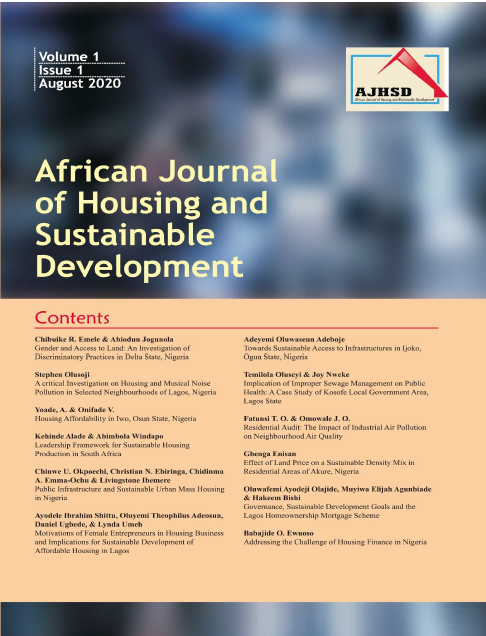Housing Affordability in Iwo, Nigeria
Abstract
Housing is recognized as one of the most important in humans' hierarchy of existential needs. However, access to decent, safe and sanitary housing accommodation at affordable disposal rates has been a mirage to most Nigerians especially the middle and low-income segment of the society. In line with SDG 11 which focuses on sustainable cities and communities, this study explores means of making cities safe and sustainable via access to decent and affordable housing. With a focus on Iwo in Nigeria's Osun State, the study aims to ascertain the extent of the problem as well as the challenges it poses to creating a sustainable built environment. Iwo is a typical Nigerian traditional town that has been transformed by modernity. The study utilizes a comprehensive data set containing socio-economic variables of households as well as indicators of housing characteristics including, cost, rent, size and quality. Primary and secondary data were utilized. The basic data set came from a structured questionnaire that was administered to selected residents of the study area. The systematic sampling technique was used to select buildings at intervals of every twentieth building in the nine wards into which the city was stratified. In all, 1,061 copies of the questionnaires were administered on household heads in the city. Secondary data were sourced from published sources such as the report of the survey of housing units in selected urban towns in Osun State by Osun State Ministry of Finance, journal articles, textbooks and the Internet among others. Frequency tables and percentages were used to explain the results of the study. It is suggested that the institutional framework to promote, enhance and encourage affordable housing provision should be created in the town. Findings establish that high cost of acquiring land (RII = 4.22) is the most important challenge of housing delivery while the least challenging factors affecting housing delivery is lack of critical infrastructures in urban and rural areas of the state (RII = 2.15).

